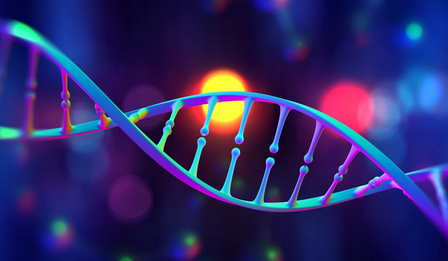Article
News
Visgenx issued patent for compositions of ELOVL2 gene therapy
Author(s):
The issuance provides patent protection in the U.S. for therapeutics incorporating the optimized ELOVL2 transgene until 2041. The patent is being prosecuted in the European Union and other countries around the globe. The company said the patent adds value to its lead program in dry AMD.
According to a news release, the patent, which is exclusively owned by Visgenx, has an expiration date of October 19, 2041. (Image courtesy of Adobe Stock)

Visgenx Inc today announced that the United States Patent and Trademark Office has issued US Patent No. 11,793,890, titled “ELOVL2 Constructs for Human Gene Therapy”.
According to a news release,1 the patent, which is exclusively owned by Visgenx, has an expiration date of October 19, 2041.
Marty Emanuele, PhD, co-founder and chief science officer at Visgenx, noted in the news release the gene is key because its expression is believed to be necessary for the survival of cells in the retina and other organ systems.1
"However, it is also uniquely susceptible to aging related methylation of its promotor and down regulation,” Emanuele said in the news release. “Thus, decline in its expression may play an underlying role in multiple aging related disorders including age-related macular degeneration. Accordingly, we believe that ELOVL2 gene therapy is an attractive strategy for treating these conditions."
Chris Chavez, PhD, vice president of Research and Development at Visgenx and primary inventor on the patent, noted it covers an optimized ELOVL2 transgene that can be used in expression vectors targeting multiple tissues.1
"We believe the issued patent adds substantial value not only to our lead program in dry AMD, but also provides the basis for a platform of ELOVL2 based therapeutics to treat aging related disorders in other tissues where it is highly expressed including the brain, liver and pancreas,” he said.
In June 2023, Visgenx unveiled positive data from a non-human primate study.2
The translational study used a single subretinal injection to deliver VGX-0111 (carrying an ELOVL2 transgene) to investigate whether VGX-0111 expresses in the target tissues and causes an increase in certain very long chain polyunsaturated fatty acids at a dose that is well tolerated, according to a news release. The company noted VGX-0111 was able to successfully demonstrate all three of these important parameters.2
The company noted in its news release in June the ELOVL2 enzyme plays a key role in the biosynthesis of LC and VLC PUFAs. During aging, expression of the ELOVL2 gene declines, resulting in a drop in the LC and VLC PUFAs needed for vision.
Moreover, the company noted VGX-0111 is an experimental gene therapy intended to increase expression of ELOVL2. It is thought that restoring physiological ELOVL2 expression will increase levels of LC and VLC PUFAs in the retina and slow or halt the progression of dry AMD.2
"The findings demonstrate that it is possible to increase the fatty acids whose decline is associated with dry AMD with a well-tolerated treatment in a species closely related to humans,” Emanuele said in a news release at the time. “This is very encouraging and bodes well for further development."
References
1. Visgenx Announces Issuance of a U.S. Patent Claiming Compositions of Candidate ELOVL2 Gene Therapy. Biospace. Accessed October 25, 2023. https://www.biospace.com/article/releases/visgenx-announces-issuance-of-a-u-s-patent-claiming-compositions-of-candidate-elovl2-gene-therapy/
2. Visgenx. Visgenx Announces Positive Results from a Key Translational Study for its Gene Therapy Candidate for Dry AMD. PRNewswire. https://www.prnewswire.com/news-releases.visgenx-announces-positive-results-from-a-key-translational-study-for-its-gene-therapy-candidate-for-dry-amd-301864203.html
Newsletter
Don’t miss out—get Ophthalmology Times updates on the latest clinical advancements and expert interviews, straight to your inbox.





